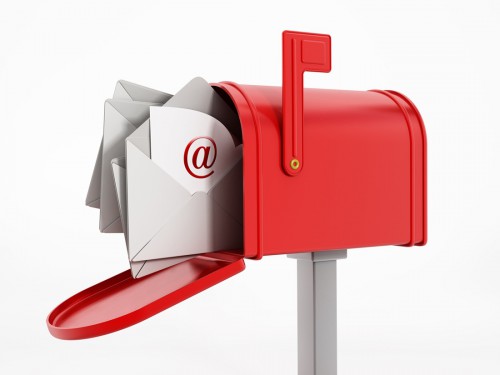Email marketing may seem easy to anyone who’s never tried it. Once you have though, you know that simply buying a list and blasting out emails is a really good way to…not accomplish very much of anything.
Far more often than not, your first email campaign will tend to raise more questions than money. So to help you move things along, I thought I’d answer some of the questions that you as eToro Partners might have about email marketing.

Here’s my quick 10 question FAQ for the beginner email marketer:
1. Is the best way to get started to buy a list and go for it?
In a word … never!
There is an inherent problem with any list you buy from any source: not a single person on that list actually signed up because they’re interested in your brand, your product or your website. As such, they’ll send your email straight to the trash folder without even reading a word of it, if it ever even gets past the spam filter.
2. OK, then what’s the alternative?
The alternative is a list you put together and develop yourself – one that only contains the addresses of those who have signed up to receive your communications. A good way of making this happen is to offer your readers some incentive they can only receive if they submit their email address – anything at all!
3. When should newsletters be used?
An email newsletter differs from a standard email in that it will contain a variety of snippets relative to your niche, your site and so on. It won’t be something of a direct advertisement or promotional piece, though it might list one or two offers somewhere in the background. Use newsletters when you have enough news to share.
4. What’s a sensible frequency to send emails?
It all depends on the nature of your site and the kind of information you have to share. Some business sites send out daily emails at 9 a.m. on the dot; others send the same kind of correspondence no more than once every few weeks. As suggested above, choose the frequency with which you send in accordance with what you actually have to say. If for example your leads have signed up for daily market reviews, then they will expect to get an email from you on a daily basis.
5. Can I avoid the spam filter?
If you buy an email list, the answer is no. If, on the other hand, you have built your own list populated only by those who have opted in, there’s technically no reason why any of the recipients should mark your emails as spam. Just be sure to make your emails professional and make it easy for them all to opt out if they want to.
6. How can I avoid poorly presented emails?
Considering the fact that nearly every email provider will render your email slightly differently, this isn’t the easiest task, to say the least. You basically have two options here: You can either test your email format by sending it to a bunch of the most common service providers and keep at it until you nail a formula that works on all fronts, or you can keep your emails relatively simple and go for elegance over flashy detail and complex layouts.
7. What are click-through rates and open rates? Why do they matter?
As you may have guessed, the open rate tells you how many people who received a specific email actually opened it, whereas the click-through rate refers to the action of clicking the appropriate link within the email to take the reader to your website.
You can use the two figures to gauge the efficacy of your emails – the open rate will tell you how good your subject line is, while the click through rate tells you how effective the actual content of the email is for driving traffic to your site.
8. What makes for a good subject line?
As a rule of thumb, a good subject line is one that’s short, to the point, compelling and in some way makes it impossible for the reader not to open the email. Think about what captures your interest when it comes to financial trading and work with that.
9. What are soft and hard bounces?
An email that cannot be deposited into the recipient’s box as intended is considered a bounce. If this bounce occurs for a reason that’s permanent – e.g. the email address is invalid or the account is blocked to outsiders– it is a hard bounce and you can remove this email from your list. On the other hand, if it’s a temporary issue, like a server outage or an overcrowded mailbox, it’s a soft bounce and you can try sending the email again at a later time.
10. How can I lower the opt-out rate?
Ignoring a subscriber’s request to opt out of your email list could send you down a slippery slope into legal trouble – don’t do it! Instead, it’s better to encourage your readers not to unsubscribe in the first place, which you can do by keeping your communications as interesting, genuine, relevant, contemporary and timely as possible. If they’re jumping ship at record pace, chances are you’re doing something very wrong and you should revisit your strategies ASAP!
Ready to start your first email campaign? Check out all the tools eToro Partners has to offer to make your campaign a success!

